In this article, I’m going to introduce you to the minor pentatonic scale, explain where it comes from (and why you should care), and give you some tips on how to use and recognise it in the real world.
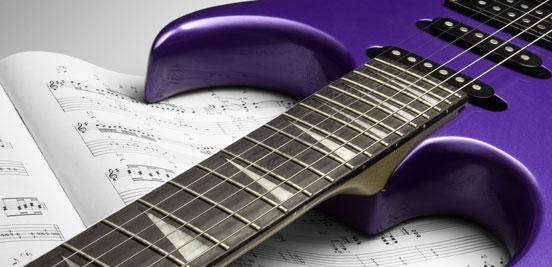
Similarly to the major pentatonic scale, the minor pentatonic is a staple of rock and blues guitar, which is also quite common in metal, punk, and other genres of music influenced by those styles. As implied by ‘pentatonic’ in the name, the minor pentatonic scale is a five note scale which shares its scale notes with the natural minor scale.
While the two scales share notes, the use and overall sound of the minor pentatonic scale is quite different from the natural minor scale. The examples below show the A natural minor scale and A minor pentatonic scale.
Consonance and Dissonance
The only difference between these two scales is that the 2 and flat-6 notes are removed from the natural minor scale to form the minor pentatonic scale. This is why the two sound slightly different from one another. These two notes also happen to be the most dissonant notes in the natural minor scale.
Dissonance essentially means these notes clash against the root note of the scale.
This is not necessarily a bad thing, but it is the reason the two scales can be so similar and be used and sound noticeably different. The example below gives an audible example of this idea of dissonance. The first two bars have consonant notes over a background rhythm guitar playing A power chords. The second two bars have the dissonant 2 and flat-6 notes over the same rhythm guitar:
The nice part of the minor pentatonic scale that tends to appeal to guitarists and other improvisors is that all of the notes in the scale are consonant notes to varying degrees. Listen to the entire pentatonic scale over the same rhythm guitar part, and notice how all of the notes fit fairly well on top of the rhythm guitar:
Recognizing the Scale
Both the natural minor scale and minor pentatonic scale have the same overall minor feel. The difference in recognizing the two scales is listening for the 2 and flat-6 notes. The following example has a simple lead guitar part over eight bars. Four of those bars have the minor pentatonic scale and four have the natural minor pentatonic scale:
The following example is a little tougher. Again, four bars of the following example are the natural minor scale and four bars are the minor pentatonic scale, but there are some more advanced guitar techniques thrown in, and the natural minor scale section has less emphasis on the 2 and flat-6 notes than the above example:
Further Training
The best method to get comfortable recognizing the difference between the minor pentatonic scale and the natural pentatonic scale is to practice playing both. The more you use either scale in your own playing, the better you will get recognizing the scales. The sound of a scale is reinforced each time it is played.
Song writing is also a good way to hone your aural skills. The different nuances of both scales will be reinforced as you use either one to create a song. You will typically find the minor pentatonic scale unsuited for certain songs because the 2 and flat-6 notes are required to create certain moods in a song. On the other hand, there may be instances where you set out to use the natural minor scale and never use the 2 or flat-6 notes, and so effectively only use the minor pentatonic scale.
Playing and using the scales in your music is the most effective way to reinforce the basic ear training and learn to recognize both scales.
Did you find this post useful? Want to see more articles about scale recognition or guitar soloing on the site? Let us know in the comments below.
Edit: Thanks to alert reader Matthew F. for pointing out the typo in the third paragraph: The natural minor’s second degree isn’t flat! Apologies to any readers who may have been confused by that one.

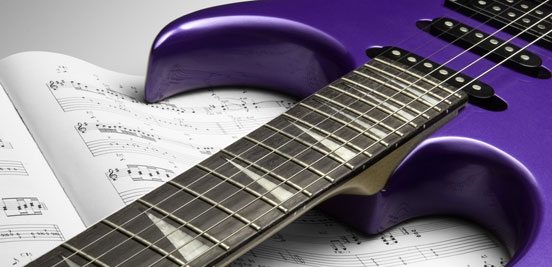
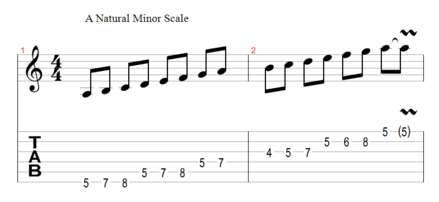
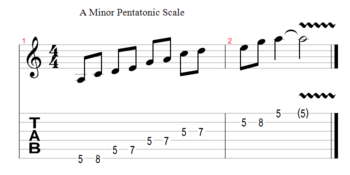
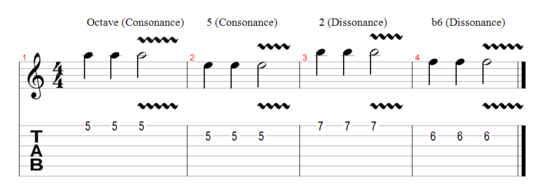
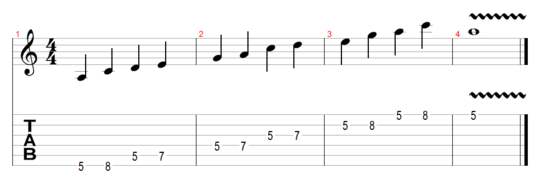
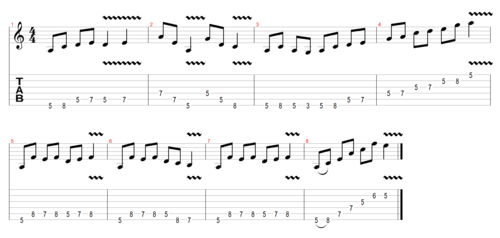
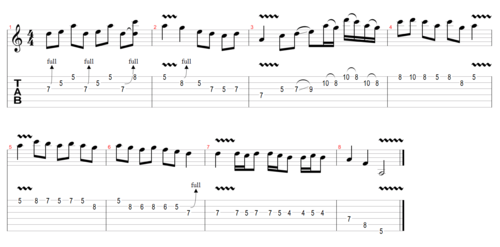






I'm taking a course on writing apps for Android devices (phones, tablet computers). I want to write a program that turns the tablet computer into a musical instrument for my four year old granddaughter. If the program uses only notes from the pentatonic scale, does that mean that she literally won't be able to play a dissonant chord? That's what I want to achieve in this app.
Hi Henry,
That sounds like a great project!
Restricting the notes to a major pentatonic scale would be one way to avoid dissonance, yes. Any combination of notes from that scale should sound quite consonant together.
Let us know how you get on!